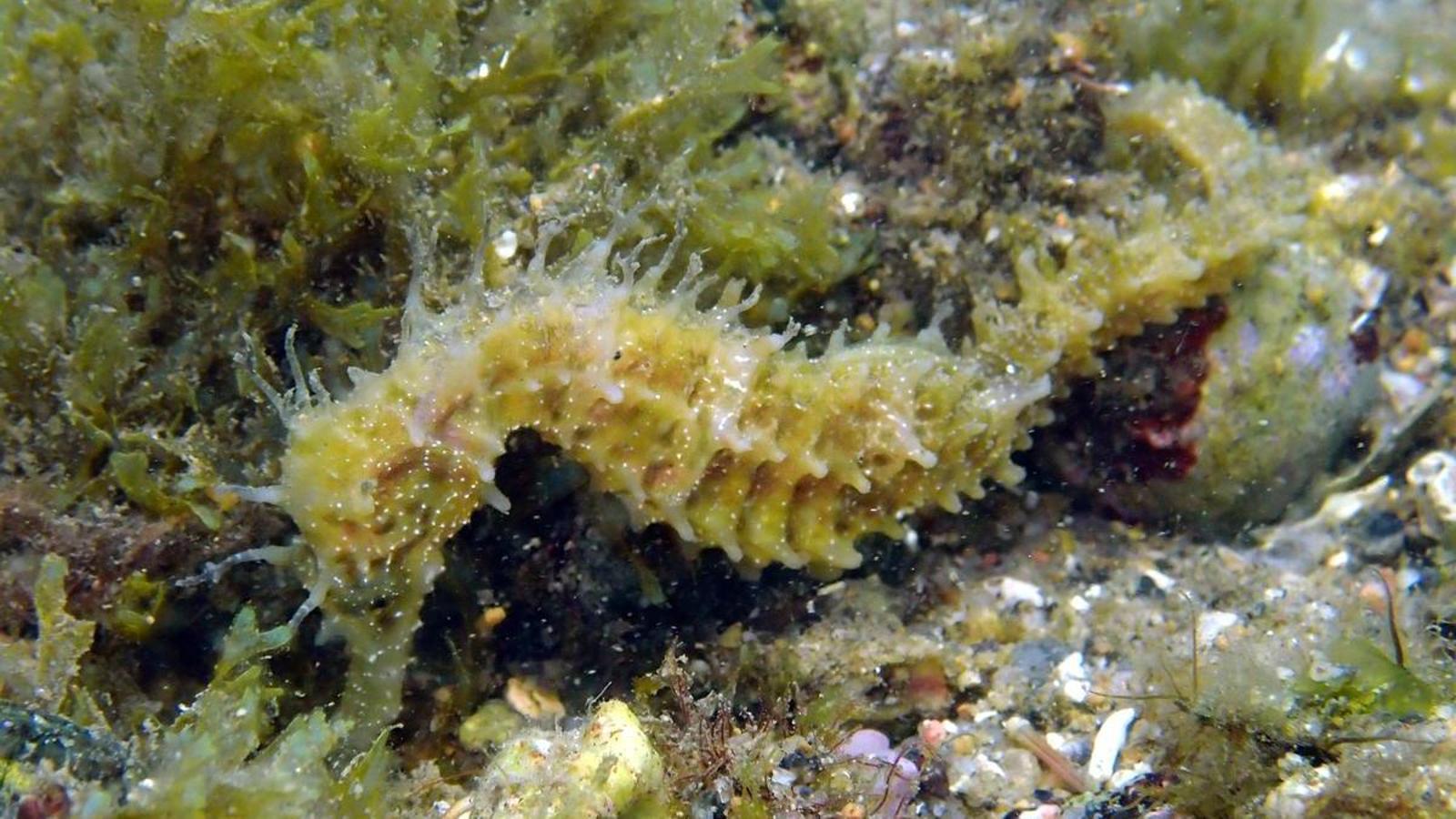In search of seahorses near the Medes Islands: "We found things we didn't expect."
Diving centers, fishermen, and scientists from L'Estartit are joining forces in a pioneering project to count specimens of this species.


GironaThe seabed of the nature reserve of the Medes Islands, in the Baix Empordà, is a paradise for diving enthusiasts. As a no-fishing zone, favored by its proximity to the mouth of the Ter River, you can observe a very rich ecosystem of fauna and flora, full of underwater caves and unique corners, to the point that the diving centers of Estartit have much more demand than supply for excursions and those of interest.
One of the recent initiatives to reduce pressure on the Medes is the Cavallets de Mar project, which organizes expeditions far from the archipelago, on the border of the natural park, near the Ter Gorge, with the aim of observing these animals. The project, which unites different actors from the fishing, tourism, and scientific research sectors, calls on volunteer divers to help count this protected species, very difficult to glimpse and very little studied in the area.
The foray, at a depth of six to eight meters, takes place in a sepieres site, structures installed on the sand by fishermen to promote the sustainable reproduction of cuttlefish and squid. It is a rope of about 500 meters, with a series of mastic branches tied to the bottom that act as an egg-laying dock for the cephalopods. And, precisely, these structures also attract the interest of seahorses: they attach themselves, live there throughout the summer, and since the bottom is sandy, it is easier to locate and count them than among masses of algae and coral, since they are very small animals, about 15 centimeters, that cavort.
The experience has had a very positive reception, and in one month, about fifteen dives have already been organized, some with scientists and others with groups of up to 12 volunteer divers. Between five and seven sea lions have been observed on each dive, an extraordinary number considering that under normal conditions, seeing one is already a stroke of luck.
"The diving centers work within a natural park with limited concessions, and this project is an opportunity to offer attractive dives beyond the reserve and to motivate divers towards conservation and sustainability. It's very positive that centers, fishermen, and scientists are cooperating for the good of the environment," explains Daniel Alzamora, representative of the Association. He adds: "The profile of the diver has changed. At first, they were almost superheroes, seeking extreme challenges. Now it's a more social profile, more controlled, and much more focused on the natural environment, so it's been very easy to find volunteer divers, who immediately wanted to feel part of the project."
Fascination among biologists and divers
The sea snail is a protected species, but its exact population is unknown because it is very difficult to detect. It is a fish from the syngnathid family that feeds on microscopic shrimp from the plankton that live near the sand, and its snout acts as a suction device. It is considered an "umbrella species," one that covers large areas and acts as a channel for the healthy ecosystems around it. It is not a key component of Mediterranean fauna and flora, however, its unique shape arouses fascination among biologists and lovers of the seabed.
"We do very environmentally friendly dives, without touching anything, very contemplative, and we thought we would only find the sand ridge, but we have also found the rock variant, which we were not expecting. We have also observed sea ridges, which are similar, but more similar, but more mobile and more mobile."
In this first edition, beyond collecting scientific data that will be presented at the end of the summer, we are also studying how to turn this point into a fixed diving destination, respectful of the environment that allows us to continue with the sightings and counts: "The objective is not to carry out many people, but to do it. We also want to lay the foundations so that it becomes a standard diving spot and interesting divers can enjoy their dive and, at the same time, report how many sea ridges they have seen and where," concludes Munill.
